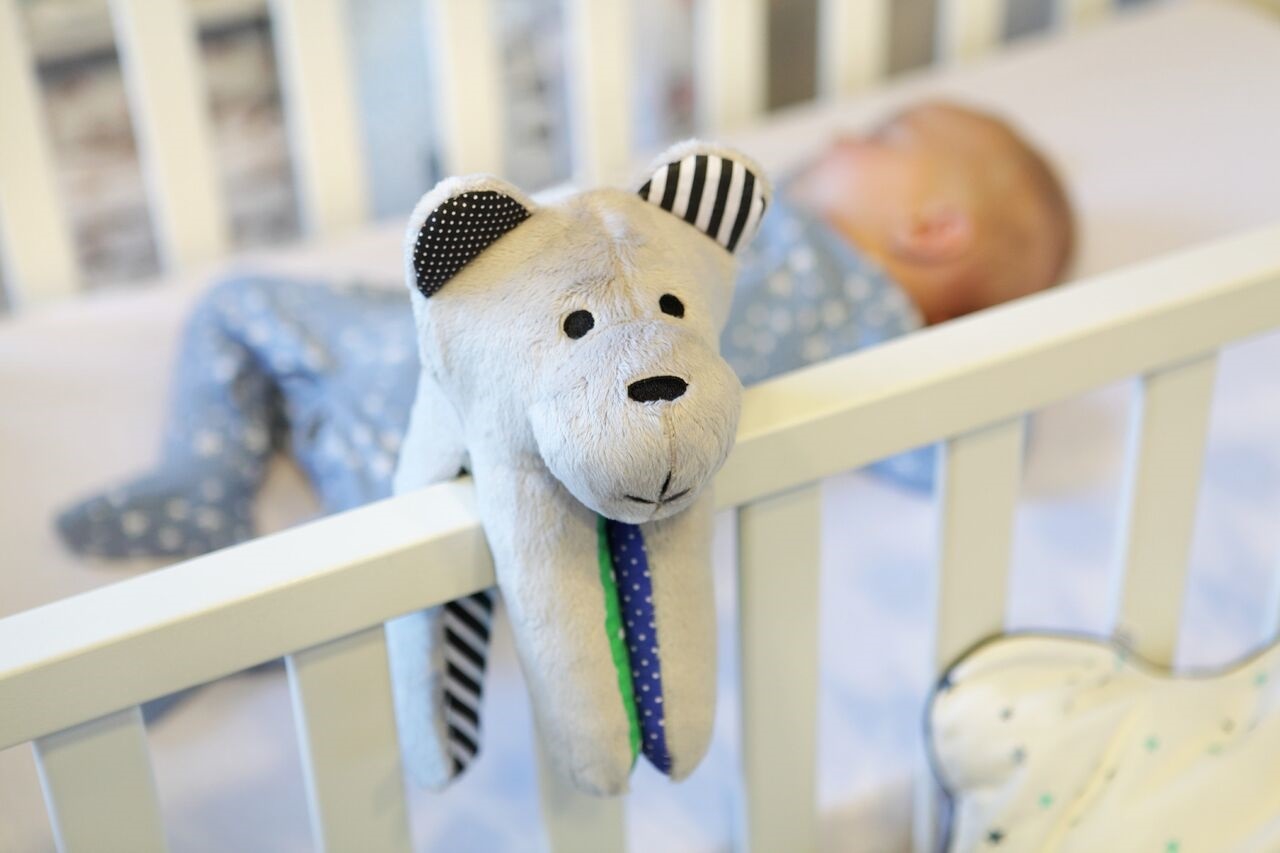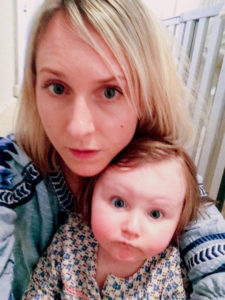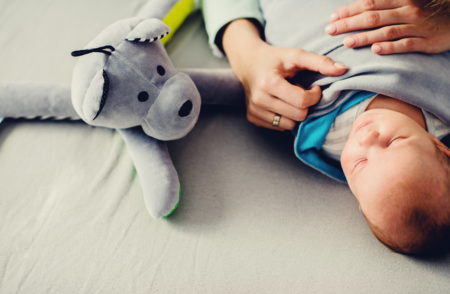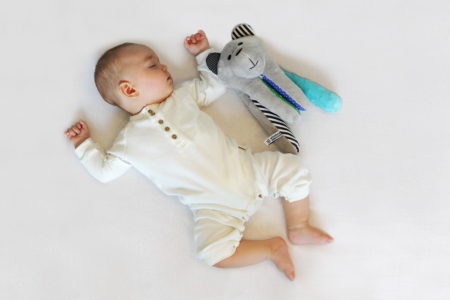Falling rain or the sound of wind, ocean or waterfall bring us peace and relaxation. Monotonous white noise is a salvation for many parents of small children and people with sleep disorders. Why is white noise becoming so popular? Recent years have brought us new studies testing the influence of white noise on the human nervous system, in varied situations and with different age groups.
Infants don’t like silence
The discussion about white noise should begin with an explanation of what happens in the mother’s womb. In short – it’s not a quiet place. Blood rushes through the umbilical cord, the mother’s heart rhythmically beats, bowel movements. Actually, the noise is louder than a turned on vacuum cleaner! Quite a party! However, baby ears are protected with fluid, vernix and thick tympanic membrane. After birth children don’t hear all the sounds either. At the time their hearing threshold is about 40dB (so they might not react to our whispers, which are about 30 dB). In the first year of life, hearing develops quickly and children are able to hear “quieter” sounds. Logically, the quiet environment might be quite stressful for a new born baby.
What is white noise and why is it so effective?
There are many types of noise, with names assigned after… colors. White noise, pink, brown, red, purple… Each of them is characterized by a different noise power on different bandwidths. Most of us know about the white noise, a name that is commonly used to describe almost all types of noise.
From the physics perspective, the white noise is a mix of random signals of all the frequencies available to the human ear, where each frequency (a signal’s pitch) has the same power, is heard with the same intensity. The name comes from the analogy to the white light, which includes the waves of all lengths and colors (from infrared to ultraviolet).
The analogy can also help us understand and illustrate the white noise’s masking effect. When in a dark room, we immediately notice each new source of light. But if the room is already bright, new light sources, such as a lamp, flashlight, etc., won’t be as easily and immediately noticed. Individual colors of light won’t be as easily masked, either.
It is the same with sounds – in a quiet room, it is easy to hear even the slightest sound. But in a room where white noise is on, other sounds are not so obvious.
Scientists began to wonder why white noise helps people to quiet down, relax, focus or fall asleep. Studies of the subject have been conducted for many years. Both positive influence and possible side effects are considered.
Faster falling asleep
One of the studies showed that even 80% of infants fell asleep within 5 minutes after the white noise was turned on (naturally, they were all fed) and only 25% were able to fall asleep in silence.
Pleasure
The influence of the noise was also determined by using the functional magnetic resonance imaging (fMRI). It turned out that the noise activates the routes related to dopamine – a neurotransmitter chemical. Dopamine-related centers are responsible for, among other things, feeling pleasure, rewards, and also memory (2).
Cognitive processes
Observation of children with ADHD shows that white noise increases their concentration and improves memory. A Scandinavian study shows that “adding” background white noise improved the children’s results when they had to memorize objects read from a test list (3,4).
Continuous sleep
Two other studies show the positive influence of white noise on the sleep of the patients on intensive therapy wards, where a lot of noisy equipment is in constant use (5,6). It is known that sleep helps regenerate organism, supports correct work of the immunological system and frequent arousals might upset and disturb these processes. It turned out that the patients who had white noise on in the background woke up less often. Their sleep was more continuous.
Things to remember when using white noise
There is also information about possible negative side-effects of using continuous white noise.
- don’t use it non-stop
- it turned out that continuous listening to white noise decreases the accuracy of tasks in some tests (7). A number of studies also showed that it might increase the cortisol, or stress hormone, levels.
- correct volume level There is also anxiety about possible hearing impairment. Study results published 3 years ago (8) showed that some devices and toys producing white noise, available on the US market, are too loud even for adults. That’s when most people began to worry about the safety of using white noise. It turned out that some of these toys emitted the noise at 85dB – louder than working vacuum cleaner. Therefore, scientists do not claim that white noise is dangerous, but if it is set too loud, hearing might be in danger. They recommend limiting the volume level to 50dB.
What’s next then? Where is the golden mean? Are there any other solutions?
Is pink the new white?
Although white noise might be helpful in a lot of situations, it turns out that pink noise can be even better. It is similar to white noise – a mix of different sounds of varied frequencies that the human ear is capable of hearing. The difference is that in pink noise the power decreases with the frequency, which means that high tones are more difficult to hear, which makes the noise more “pleasant” to listen to. Pink noise is also good at masking other sounds and has all the positive qualities discussed above without stimulating cortisol production.
How to safely use noise-producing devices?
White noise might be useful in calming down a crying, stressed baby. It can also help a parent fall asleep when their sleeping pattern has been deregulated. Rembering about the benefits and potential negative side-effects, we should follow these rules:
- the the volume level should not exceed 50 dB, which is equivalent to the sound of falling rain or shower,
- the source of noise should not be placed directly in the baby’s ear but at least a dozen inches away
- white noise should be used to help the baby fall asleep and it should not be on for 8-10 hours per day,
- we should use pink noise, which is decidedly better, more pleasant and less “stress-inducing” even at prolonged use.
References
1. https://www.ncbi.nlm.nih.gov/pubmed/2405784
2. https://www.ncbi.nlm.nih.gov/pubmed/24345178
3. https://www.ncbi.nlm.nih.gov/pubmed/17683456
4. https://www.ncbi.nlm.nih.gov/pmc/articles/PMC4791764
5. https://www.ncbi.nlm.nih.gov/pubmed/16139772
6. https://www.ncbi.nlm.nih.gov/pubmed/27354974
7. https://www.ncbi.nlm.nih.gov/pubmed/26579024
8. http://pediatrics.aappublications.org/content/early/2014/02/25/peds.2013-3617
9. https://www.ncbi.nlm.nih.gov/pubmed/8340228











